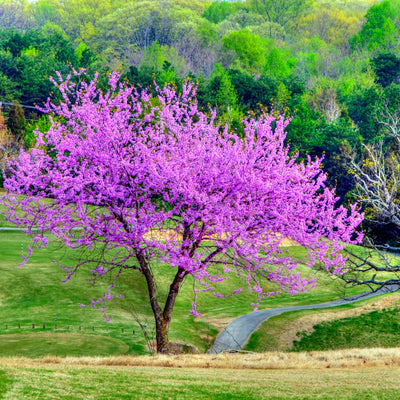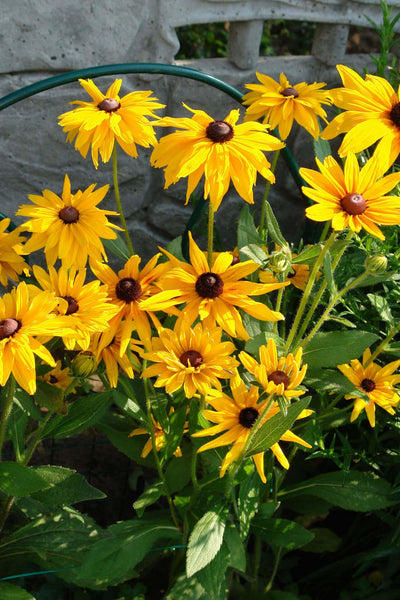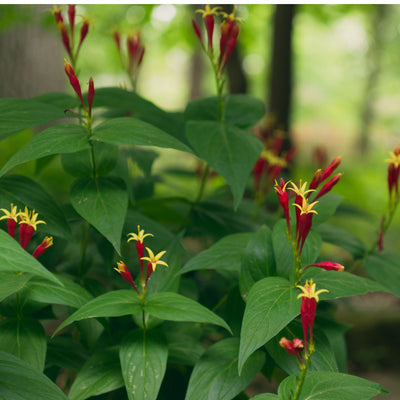Red bud trees, also known as Eastern Redbuds, are some of the most sought-after ornamental trees that grace gardens across North America. These stunning trees are scientifically known as Cercis canadensis and are loved for their breathtaking blooms ranging from pink to purple. Their vibrant flowers adorn their branches in spring. Suppose you're eager to transform your garden with the beauty of redbud trees. In that case, this article includes valuable insights, tips, and techniques to help you cultivate and care for these exquisite trees.
Selecting the Right Location Red Bud Trees
If you're planning to grow redbud trees, selecting the right location is essential. These trees are known for their beautiful pink or purple flowers, but you must choose a spot with well-drained soil to ensure their healthy growth. The good news is that they are adaptable to different soil types, including clay, loam, and sandy soils, but they grow best in soils that are slightly acidic to neutral. So, before planting a redbud tree, make sure to test the pH level of your soil. When picking a spot, consider factors like the amount of sunlight, shade, wind protection, and proximity to other plants and trees.
Space: These trees can grow up to 20-30 feet tall and have a similar spread, so it is crucial to provide ample space for your redbud tree to develop without overcrowding other plants or structures. This space will allow the tree to spread its canopy and grow its roots, necessary for its overall health and well-being.
Shelter: Protect your redbud tree from harsh winds, which can damage its delicate branches and blossoms. You can place the tree near a natural windbreak or fencing to provide it with the necessary shelter and support.
Planting Your Redbud Tree
After scouting the ideal location for your redbud tree, it's time to plant it. To make sure that your tree has a healthy start, it's essential to follow these detailed steps:
Timing: The ideal time to plant a redbud tree is in the early spring, just before the tree starts to leaf out, or when it is dormant in late fall. This timing allows the tree to establish roots and prepare for the growing season.
Digging the Hole: Dig twice as wide as the root ball but not deeper. Place the tree in the hole and ensure that the top of the root ball is level with the ground's surface.
Soil Preparation: Mix organic compost into the soil to improve its fertility and drainage. Redbud trees thrive in well-drained soil, so water does not accumulate around the roots.
Mulching: put mulch around the tree's base to keep it damp, suppress weeds, and regulate soil temperature. Keep the mulch at least 2-3 inches from the trunk to prevent moisture-related diseases.
Watering: Water your redbud tree thoroughly after planting and keep the soil consistently moist during the first year to establish a robust root system.
Care Guide for Redbud Trees
Caring for your redbud tree is crucial for its long-term success and beauty. Below are some detailed guidelines that will help you maintain its health and vitality:
Pruning: Redbud trees have a striking, sprawling growth pattern and require minimal pruning. However, during dormancy, you can trim dead or damaged branches to maintain their shape and encourage airflow, which helps prevent disease.
Watering: Although redbud trees are moderately drought-tolerant once established, they still benefit from regular watering during dry spells. Water deeply and consistently to prevent stress and help the tree thrive. A slow trickle from a hose for several hours is ideal, allowing the water to penetrate the soil deeply.
Pests and Diseases: Check your tree regularly for common pests such as aphids, spider mites, cankers, and leaf spots, and take action promptly if you spot any. Applying organic pesticides or fungicides can help protect your tree and prevent damage.
Deer Protection: If you live with deer, consider protecting your redbud tree with fencing or repellents. Deer may browse on the tender foliage, which can cause lasting damage to the tree. To deter them, you can also try planting deer-resistant companion plants nearby, such as lavender or daffodils.
How to Prune Your Redbud Tree for Optimal Growth and Shape
Proper pruning is important to guarantee that your redbud tree remains healthy and visually appealing. Pruning involves selectively trimming branches that are either dead, damaged, or diseased. This process not only improves the tree's structure but also its overall appearance. Pruning your redbud tree will encourage optimal growth and shape. Here are some helpful tips on how to prune your redbud tree correctly:
Timing: Prune your redbud tree during its dormant season in winter or spring before new growth begins. This is the best time to prune, as it minimizes stress on the tree and allows you to see its structure more clearly.
Deadwood Removal: Remove any dead, damaged, or diseased branches. These branches are easy to spot during the dormant season because they will not have any leaves or buds. Trimming these branches will prevent the spread of disease and insects and promote healthy wood growth.
Thinning: Thin out crowded branches and those that grow towards the tree's center. This will enhance air circulation and reduce the risk of diseases. Aim to maintain a balanced, open canopy, allowing sunlight to reach the lower branches and keep the tree healthy.
Shaping: Redbud trees naturally have a graceful, spreading shape. If you need to shape your tree, do so sparingly and avoid excessive pruning. Focus on removing only the branches necessary to maintain the tree's natural shape.
Cut at a Slant: Use clean, sharp pruning shears when making pruning cuts. Cut just beyond a bud or lateral branch at a slight angle to promote new development. Avoid leaving stubs, as they can become infected with disease or insects.
Growing a redbud tree can add a touch of grace and elegance to your landscape, transforming it into a delightful and picturesque experience. These trees are widely known for their stunning and vibrant blooms that range from magenta to pink, creating a mesmerizing display of color that can captivate any onlooker. The beauty of these trees makes them a popular choice for gardeners and landscapers worldwide.
Select the perfect location for planting to ensure that your redbud tree thrives and continues to produce its stunning blooms. Redbud trees prefer well-draining soil with a slightly acidic pH, rich in nutrients, and receive plenty of sunlight. Once you find the ideal location, plant your tree correctly, providing it with adequate water and nutrients to ensure its healthy growth.
Maintaining the health and shape of your redbud tree is of utmost importance as it grows. Regular pruning and upkeep will prevent pests and diseases from damaging the tree and ensure it remains healthy and beautiful for years. This guide provides comprehensive advice to help you cultivate and care for your redbud tree, creating a stunning and picturesque focal point in your garden that will leave all who see it in awe.
Don't wait any longer to experience the beauty of these captivating trees. Start your journey to growing redbud trees today and witness their stunning beauty firsthand.
Companion Plants for Redbud Trees



